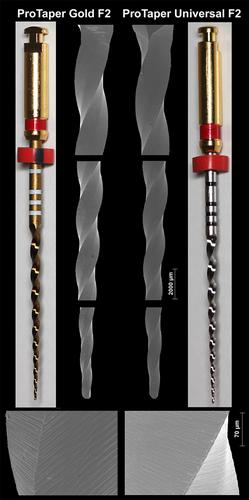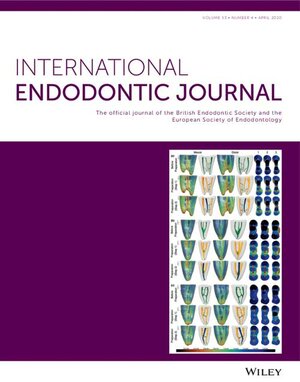Assessing the fatigue resistance of NiTi instruments: A DSC-based approach to understanding temperature effects
Abstract
Aim
This study aims to demonstrate that phase transformation analysis, assessed via differential scanning calorimetry (DSC), offers a more comprehensive understanding of NiTi instruments' mechanical behaviour than traditional fixed-temperature fatigue testing by evaluating phase transformation temperatures and their impact on cyclic fatigue strength of ProTaper Universal and ProTaper Gold at 20 and 35°C.
Methodology
Fifty ProTaper Universal F2 (n = 25) and ProTaper Gold F2 (n = 25) NiTi instruments were compared for geometric design (blade length, helical spirals, spiral density, spiral geometry, tip design and surface quality) and metallurgical properties including elemental analysis (energy-dispersive X-ray spectroscopy) and phase transformation temperatures. Then, cyclic fatigue strength was tested at room (20 ± 1°C) and body (35 ± 1°C) temperatures using a standardized artificial canal and cyclic fatigue resistance test. Time to fracture (in seconds) was recorded, and data were statistically analysed using the independent Student's t-test for intergroup analysis and the paired Student's t-test for intragroup analysis (α = 5%).
Results
Both instruments had a 17 mm blade with 10 spirals (0.59 spirals/mm), similar geometry and NiTi wires with near-equiatomic nickel-titanium ratios, differing only in metal alloy colour. DSC analysis showed distinct phase transformation temperatures, with ProTaper Universal exhibiting an R-phase start (Rs) at 16.2°C and finish (Rf) at −12.7°C, while ProTaper Gold had an Rs at 44.0°C and Rf at 28.6°C, though both transitions occurred gradually. Fracture time was significantly longer at 20°C than at 35°C for both instruments (p < 0.05), with ProTaper Gold showing a greater reduction (58%) but maintaining superior cyclic fatigue strength at both temperatures (p < 0.05).
Conclusion
The cyclic fatigue strength of NiTi instruments depends on temperature, highlighting the limits of assessing performance at a single predefined temperature. DSC offers key insights into phase transformation, enabling a better interpretation of mechanical properties beyond mechanical testing alone. Integrating metallurgical characterization with cyclic fatigue analysis improves the evaluation of NiTi instruments, ensuring a more accurate understanding of their mechanical performance.


 求助内容:
求助内容: 应助结果提醒方式:
应助结果提醒方式:


